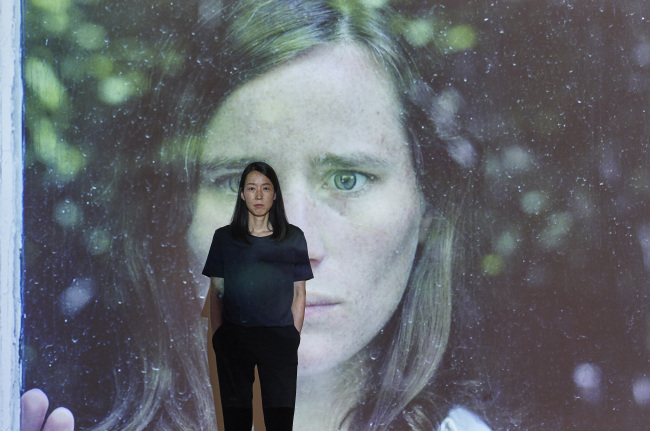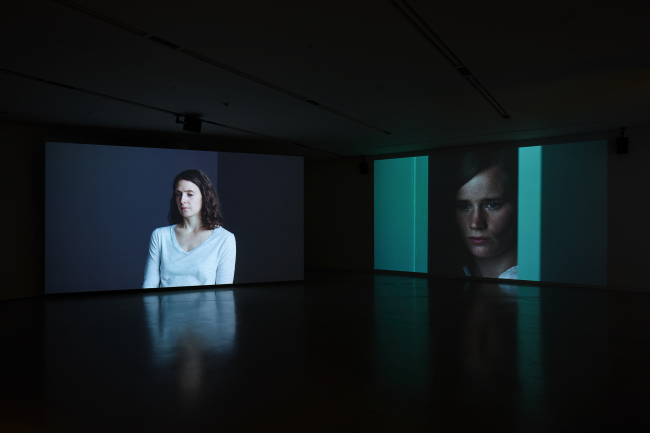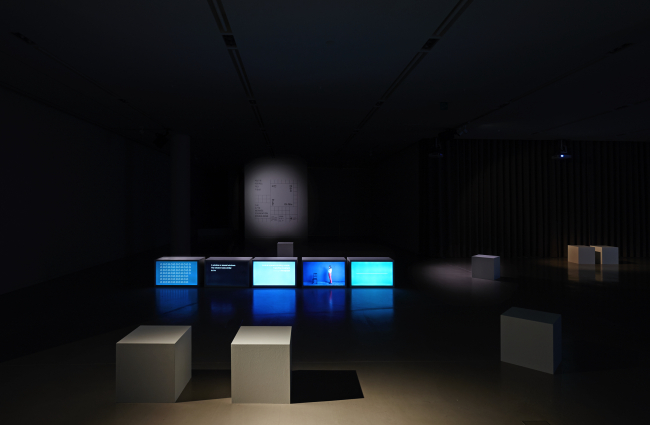[Herald Interview] Oh Min’s ‘Etude’ brings the language of the stage into the realm of visual arts
Hermes Foundation Missulsang winner mines her training as pianist, maps out steps in creating a stage performance
By Shim Woo-hyunPublished : Sept. 26, 2018 - 16:49
Can dancers practice their art with etudes, like classical musicians?
Artist Oh Min’s “Etude ABCD” at Atelier Hermes in Seoul is an exhibition that comprises a set of dance etudes with intricately woven choreography.
The winner of the 17th Hermes Foundation Missulsang, Oh is an artist who brings the language of the stage into the realm of visual arts.
Artist Oh Min’s “Etude ABCD” at Atelier Hermes in Seoul is an exhibition that comprises a set of dance etudes with intricately woven choreography.
The winner of the 17th Hermes Foundation Missulsang, Oh is an artist who brings the language of the stage into the realm of visual arts.

“A few years ago, I had a chance to see Anne Teresa De Keersmaeker perform live at the Museum of Modern Art in New York and decided to create a work about the performance. One of the outcomes was the recent exhibition at the Seoul Museum of Art. The work exhibited at the SeMA became sort of an etude for the latest exhibition here at Hermes,” Oh said in a recent interview with The Korea Herald.
An etude originally refers to a short classical composition used for musical exercise, which may include scales, arpeggios, octaves, double notes and trills. The French word also refers to short classical music pieces written specifically to be used as practice materials for larger works.
Oh’s “Etude ABCD” at Atelier Hermes is a set of etudes for choreography, designed to be used by dancers as they prepare for their perfect moment on the stage.

The four etudes -- “Etude A,” “Etude B,” “Etude C” and “Etude D” -- highlight the different modes in which dancers may perceive their surroundings.
“Etude A” is a film work that shows performers seeing objects that exist in outdoor spaces, such as trees, a forest, buildings, a wall, people on the street and light.
“Etude B” is a set of five separate TV screens that show written and visual descriptions collected while filming “Etude A.”
“Etude C” is a montage of cuts of dancers, each sitting on a chair inside a room where they are asked to imagine performances based on the choreographic instructions given in “Etude B.”
“Etude D” is a live dance performance based on “Etude B.”
“Etude” -- a term that was also employed in Oh’s previous exhibitions -- is an important leitmotif for the artist, who trained as a pianist.


Oh started playing the piano when she was 6 and studied piano at Seoul National University before she decided to study design and later fine arts.
“I spent my young years as a pianist, and the years of practice have made me fond of the ways, measures and steps required to carry out a given work,” Oh said.
“Preparing a Chopin Sonata can be broken down into three separate steps, for instance,” she explained. “The three processes are analyzing and understanding the given score, calibrating your body to make the most appropriate sounds and finally the constant repetition of bodily practices.
“The last part is what is oftentimes neglected.”
The exhibition “Etude ABCD” can be understood in a similar vein. Rather than a narrative, the exhibition lays out the separate steps that might be used when preparing for a one-time stage performance.
“When one performs on the stage, detailed plans and practices are required beforehand. A live performance may have some improvisations here and there. However, it is only possible when numerous rehearsals have preceded it. Rehearsals are processes in which performers expand their options that they may use in future performances. Based on those options, performers also have to compose every moment on the stage,” Oh said.
In addition to physical coordination, perception on the stage also plays a key role, Oh said, adding that the ways in which a performer conceives of the stage make each performance very different.
“I watched this interview of Yvonne Rainer one day, where she said that dance provides the viewers with an experience that is different from those (provided by) other forms of art. The experience that a dance performance offers the viewers is an ephemeral one, because the performance disappears as one watches it.
“What is left after the performance are pieces of memories. The same thing applies to a music performance. This is why artists have to become very keenly aware of their surroundings on the stage,” Oh said.
“Etude D” represents how a dancer trains her own perceptions.
During the “Etude D” performance at Atelier Hermes, a female performer stretches her body, while reading the detailed guides for the dance moves displayed on the five screens on the floor.
Soon, the dancer starts to move carefully between the people and objects in the gallery. The viewers watch the dancer moving around and sometimes adjust their positions in the space accordingly, to see what the dancer is doing and to look where the dancer is looking.
The four etudes are presented as practice materials for dancers, but the meticulously woven etudes have qualities that allow them to stand as independent works, much like the etude compositions of Chopin, Liszt, Debussy and Rachmaninoff.
The exhibition runs through Nov. 4.
By Shim Woo-hyun (ws@heraldcorp.com)









![[Kim Seong-kon] Democracy and the future of South Korea](http://res.heraldm.com/phpwas/restmb_idxmake.php?idx=644&simg=/content/image/2024/04/16/20240416050802_0.jpg&u=)








![[KH Explains] Hyundai's full hybrid edge to pay off amid slow transition to pure EVs](http://res.heraldm.com/phpwas/restmb_idxmake.php?idx=652&simg=/content/image/2024/04/18/20240418050645_0.jpg&u=20240418181020)

![[Today’s K-pop] Zico drops snippet of collaboration with Jennie](http://res.heraldm.com/phpwas/restmb_idxmake.php?idx=642&simg=/content/image/2024/04/18/20240418050702_0.jpg&u=)